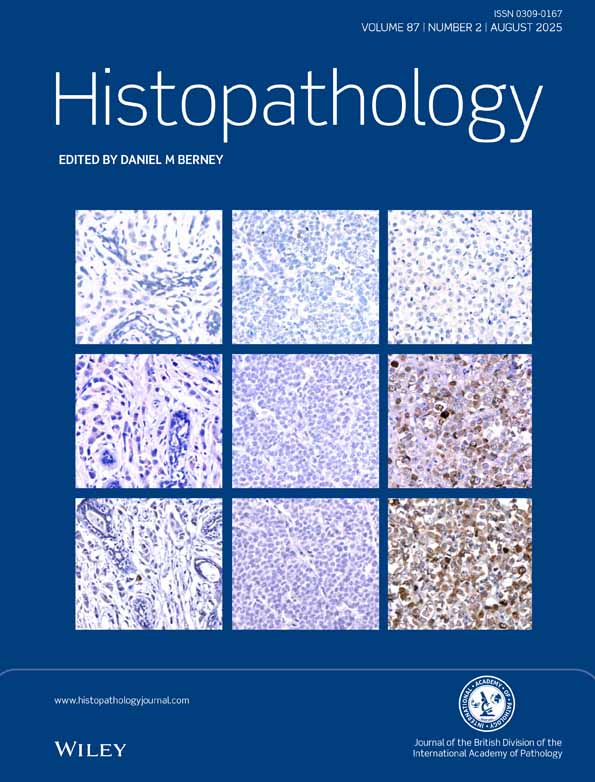RAF1-rearranged spindle cell neoplasm: a clinicopathological and molecular genetic study of six cases with review of the literature
Abstract
Aims
RAF1-rearranged spindle cell neoplasm represents a rare but distinctive entity in the category of kinase-altered spindle cell neoplasms . We describe herein a cohort of six additional cases of RAF1-rearranged spindle cell neoplasm to further broaden its clinicopathological and molecular spectrum.
Methods and results
The clinicopathological features, immunophenotypes and molecular profiles of six RAF1-rearranged spindle cell neoplasms were assessed. A comprehensive review of the literature was performed. There were two males and four females with age at presentation ranging from 0 to 65 years (median = 17 years). Three tumours arose in the lower extremities, two in the head and neck region and one in the ileum. Morphological examination showed spindle cell tumours with variable cellularity and atypia, displaying solid growth (n = 4), infantile fibrosarcoma-like (n = 1) and malignant peripheral nerve sheath tumour-like (n = 1) patterns respectively. Using immunohistochemistry, three cases co-expresssed CD34 and S100. Targeted RNA sequencing identified PDZRN3::RAF1, FMR1::RAF1, PTPRG::RAF1, QKI::RAF1, SPPL2A::RAF1 and ERC1::RAF1 fusion in one case each. RAF1 rearrangements were subsequently substantiated by fluorescence in-situ hybridisation. Follow-up (14–48 months) in four patients showed no signs of local recurrence or distant metastasis.
Conclusions
RAF1-rearranged spindle cell neoplasm encompasses a morphologically and molecularly diverse spectrum of mesenchymal tumours occurring in both children and adults. We describe an ileal lesion and two novel SPPL2A::RAF1 and ERC1::RAF1 fusions to further expand its clinicopathological and genetic spectrum.
Graphical Abstract
Conflicts of interest
The authors declare that they have no conflicts of interest.
Open Research
Data availability statement
Data are available on reasonable request.





